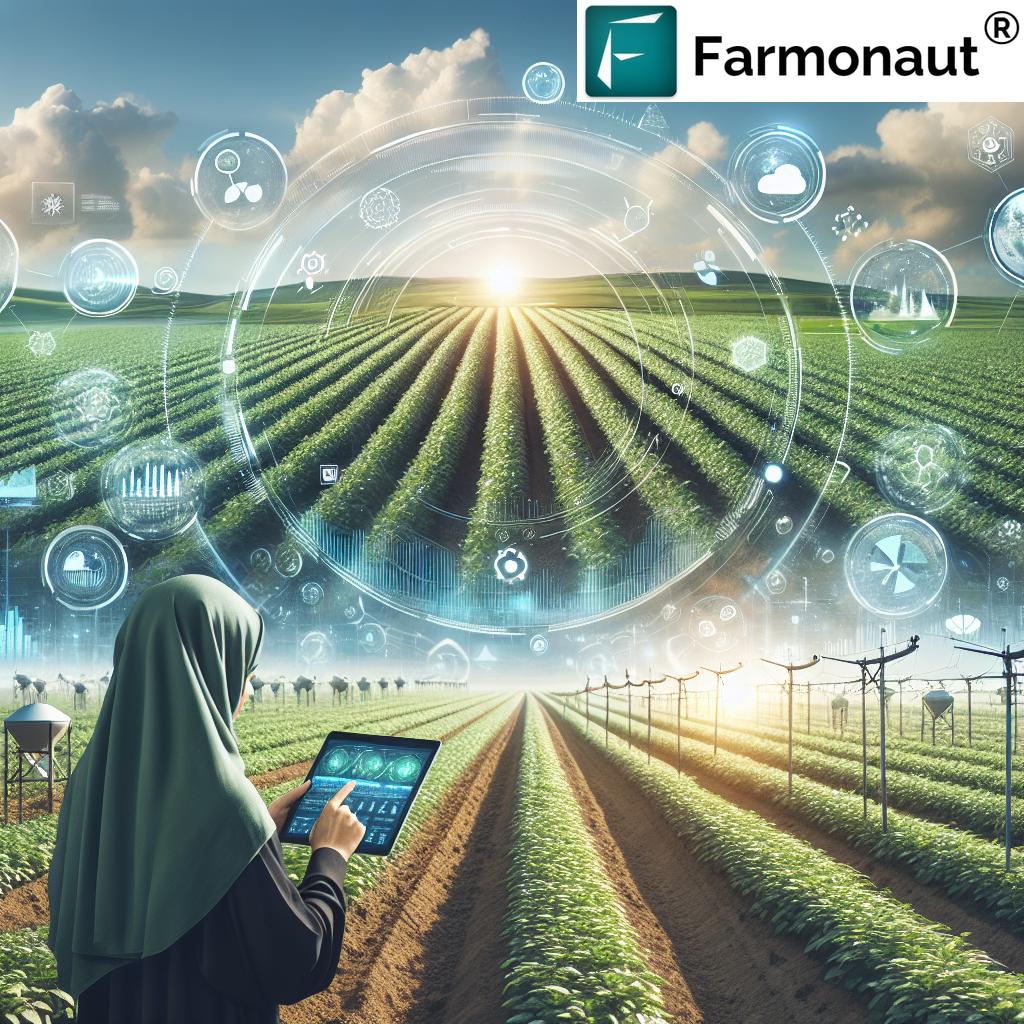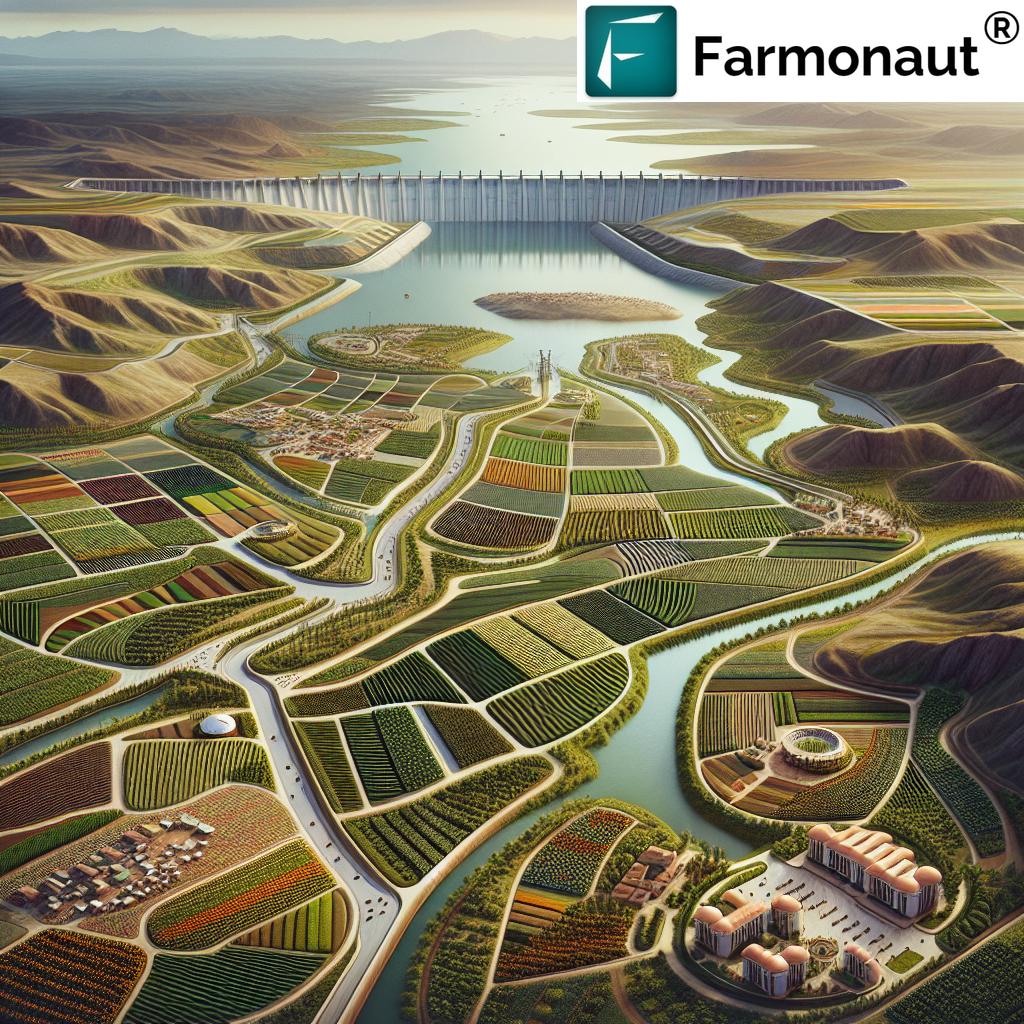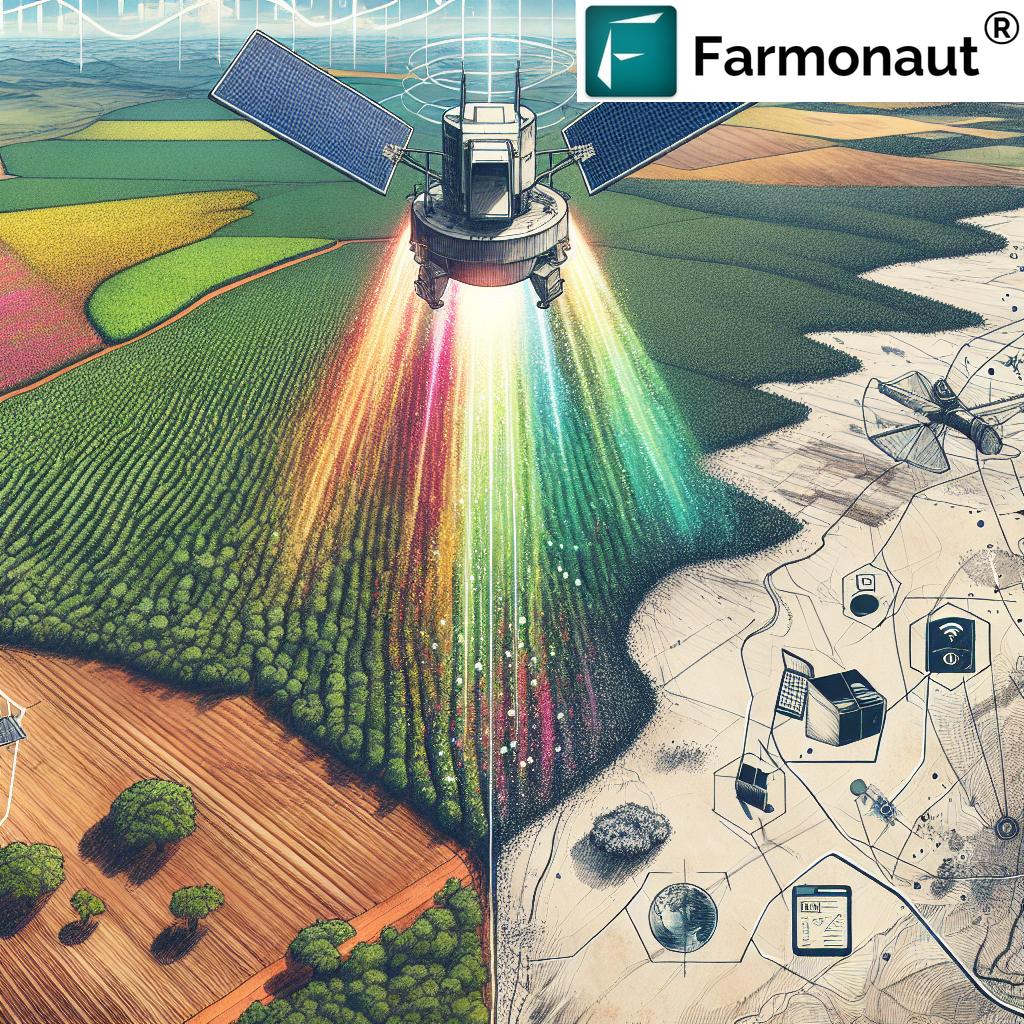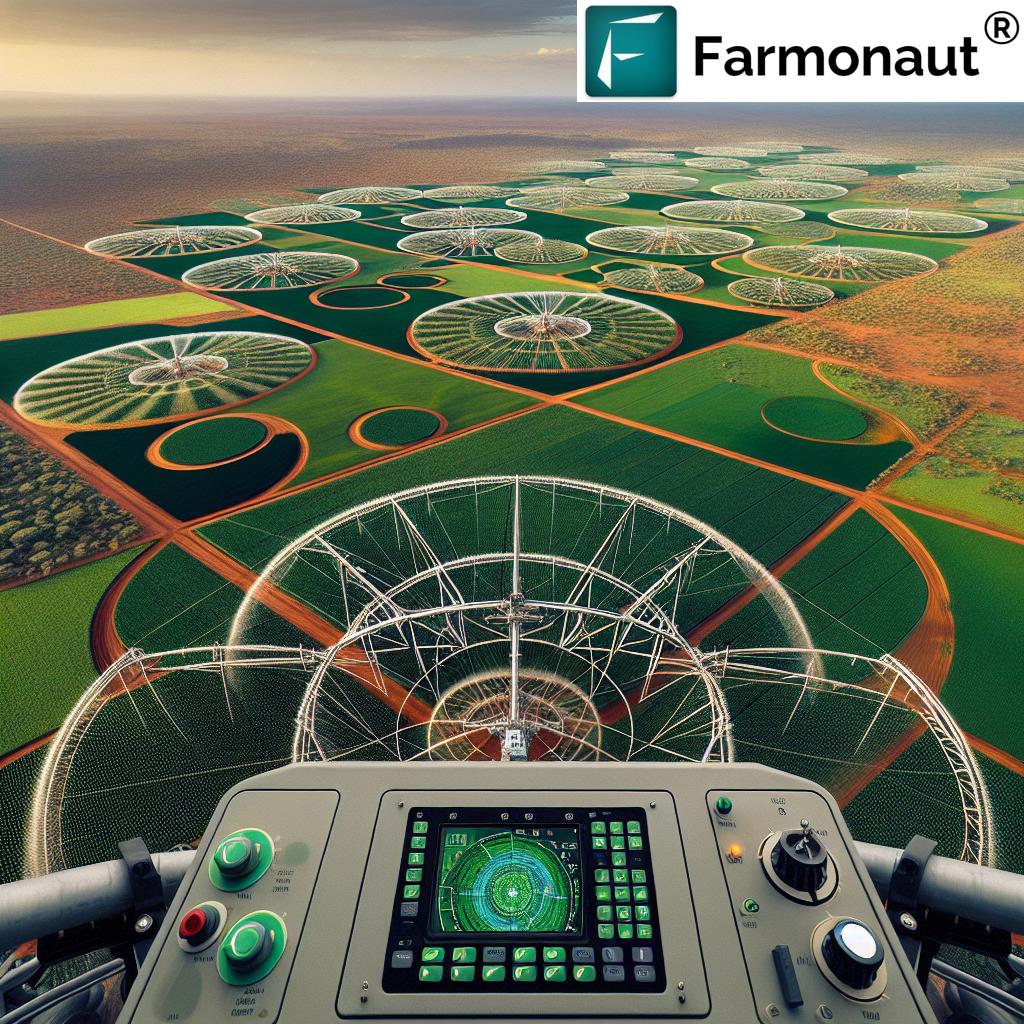Best Soybean Fertilizer: Brazil & Pole Beans Guide (2025)
Discover the best soybean fertilizer for Brazil soybean & pole beans. Dive into advanced fertilization, soil health, and sustainable crop growth in 2025. Make informed decisions for maximum yields and sustainability in Brazilian agriculture and beyond.
“Brazil’s advanced soybean fertilization technologies boosted yields by 15% between 2020 and 2024, enhancing global supply stability.”
Introduction: The Importance of Best Soybean Fertilizer for Brazil Soybean and Pole Beans
In 2025, soybean cultivation continues to be a cornerstone of global agriculture, with Brazil solidifying its position as one of the world’s leading producers of soybeans. As worldwide demand for high-yield, sustainable crop production grows, selecting the best soybean fertilizer has become critical for maximizing soil health, boosting crop productivity, and ensuring environmental sustainability. With intensive soybean and pole bean production across Brazil’s diverse farming regions—including the Cerrado, a vast tropical savanna—farmers face unique challenges and opportunities regarding fertilization strategies.
Brazilian soybean fields often feature acidic soils with variable nutrient availability. This underscores the importance of an evidence-based, balanced fertilizer regimen that considers nitrogen, phosphorus, potassium, and micronutrients—alongside innovative technologies and organic amendments for optimal crop growth. As agriculture in 2025 continues integrating precision tools and sustainability, mastering soybean and pole bean fertilization is more essential than ever for meeting global food and protein demands.
Fertilization Strategies for Brazil Soybean: Advanced Approaches for 2025
Brazil soybean farmers must adapt their fertilization methods to tackle variable soil conditions, especially in Cerrado and other tropical regions. The best soybean fertilizer strategies in 2025 focus on:
- Precision Application: Applying nutrients based on detailed soil analysis, GPS mapping, and satellite data to optimize input use and yields.
- Nutrient Targeting: Focusing on macronutrient balance (N, P, K), correcting common micronutrient deficiencies such as zinc and boron, and adding organic matter to improve long-term soil health.
- Integrated Technologies: Using remote sensing, advanced fertilization technologies, and decision support tools for real-time adjustments in fertilizer application, promoting both productivity and sustainability at scale.
Why Is Fertilization Critical for Soybean and Pole Beans?
Both soybeans and pole beans are leguminous crops—plants capable of atmospheric nitrogen fixation via rhizobium bacteria. This symbiotic process means they often require less added nitrogen compared to non-legumes. However, high-yield systems—especially in Brazil—can stress soils and make supplemental fertilizer essential for:
- Maintaining balanced nutrient levels in acidic, low-fertility soils
- Ensuring optimal root development, energy transfer, and pod formation
- Boosting resistance to pests, diseases, and environmental stresses
- Supporting early-season crop establishment and robust long-term growth
“Innovative pole bean soil health solutions can increase nitrogen uptake by up to 25% for sustainable crop growth in 2025.”
Key Nutrients for Soybean and Pole Beans: Optimizing Growth & Yield
Proper fertilization is all about providing the key nutrients to meet crop demands under specific soil conditions. Let’s break down the essential nutrient roles and management in Brazilian agriculture for both soybeans and pole beans.
Macronutrients: N, P, and K
- Nitrogen (N): Legumes fix atmospheric nitrogen via rhizobium, but starter nitrogen (15–30 kg/ha) can support early seedling growth, especially in low-fertility or newly broken soils common in Brazil. Excess N, however, can inhibit symbiosis—balance is essential.
- Phosphorus (P): Especially critical in Brazil’s acidic soils. It’s vital for root development, energy transfer (ATP), and nodulation (formation of nitrogen-fixing nodules). We recommend using rock phosphate or triple superphosphate at planting to enhance growth and fixation.
- Potassium (K): Required for enzyme activation, osmoregulation, and drought resistance. Potassium application also improves disease resistance and is particularly important in Brazil’s tropical climate zones where K leaching is frequent.
Key Considerations for Best Soybean Fertilizer in Brazil:
- Balance NPK inputs using reliable soil analysis to avoid nutrient imbalances or environmental runoff.
- Correct soil acidity (commonly pH 4.5–6.0 in Cerrado soils) with agricultural lime applications before planting. The Farmonaut Agro-Admin App assists large-scale farm management through satellite-based soil condition mapping for precision lime distribution.
- Split potassium applications during key crop stages to optimize uptake and support robust pod and seed formation.
Micronutrient Management & Organic Soil Amendments: The Secret to Sustainable Productivity
While NPK are the trio of macronutrients at the core of fertilization, micronutrient management is critical for maximizing yields and sustaining long-term soil health. Zinc and boron are two particularly essential elements commonly limited in Brazilian soils—deficiencies can impair enzyme activation, pod formation, and seed quality. Foliar applications are effective for rapid correction.
- Zinc: Vital for enzyme function, protein synthesis, and reproductive development. Apply zinc sulfate or chelated zinc through foliar sprays, especially if soil zinc is <1 mg/kg.
- Boron: Key for cell wall strength, pollen formation, and pod set. Soil or foliar boron applications help avoid pod abortion and seed quality losses.
- Other Micronutrients: Copper, manganese, and molybdenum may also require attention, dictated by site-specific soil and leaf analysis.
Additionally, incorporating organic amendments—like compost, green manure, or even crop rotation with cover crops—improves soil structure and provides slow-release nutrients to foster soil biology. This approach is gaining traction rapidly in Brazil and is a fundamental part of sustainable fertilizer strategies for 2025.
Innovations, Technology, and Sustainability in Fertilization (2025)
The future of fertilization in Brazil soybean and pole bean farming is deeply intertwined with technological innovation and sustainability. In 2025, several transformative trends are impacting Brazilian agriculture:
1. Precision Fertilizer Application
- Variable Rate Technology (VRT): Using satellite data, drones, and advanced soil sensors allows application of nutrients exactly where required—reducing waste, improving yields, and minimizing environmental impact.
- Remote Sensing: Farmonaut’s satellite-driven crop monitoring tools deliver NDVI (Normalized Difference Vegetation Index) and soil condition maps. These insights optimize fertilizer decisions for soybeans, beans, and other crops while tracking the evolution of nutrient needs across growth stages.
Explore how to monitor your farm with satellite and AI with our
Farmonaut Web System Tutorial:
2. Enhanced-Efficiency Fertilizers (EEFs) & Advanced Forms
- Slow-Release & Controlled-Release Fertilizers: New generations of coatings and granules release nutrients gradually, reducing leaching and volatilization. Especially valuable in tropical regions prone to rainfall and runoff.
- Nano-fertilizers: Use engineered nanoparticles for higher nutrient use efficiency and targeted uptake by crops—an innovative strategy with growing research and field trials in Brazil.
- Bio-fertilizers: Products containing living microorganisms to enhance nitrogen fixation and phosphorus availability, bolstering soil health and reducing reliance on synthetic inputs.
3. Digital Monitoring & Sustainability Tools
- Carbon Footprinting: Track the environmental impact of fertilizer choices and field operations. Farmonaut’s carbon tracking module enables users to reduce emissions and comply with upcoming sustainability certifications in Brazilian and global markets.
- Blockchain Product Traceability: Bring transparency and trust to crop production. Knowing the origin, cultivation, and fertilization practices of soybeans and beans enhances marketability and consumer confidence.
Learn how AI-based advisories can optimize soybean and pole bean fertilization utilizing up-to-date weather & soil data from satellite feeds:
Best Fertilizer for Pole Beans: Lessons from Soybean Cultivation
Pole beans (as opposed to bush beans) are grown extensively in Brazil’s subtropical and tropical regions. While they share the legume advantage of atmospheric nitrogen fixation, their longer growth cycle and vertical architecture mean unique nutrient demands—particularly for potassium and phosphorus needed for pod set and sustained vegetative growth.
- Balanced NPK Fertilization: Initial starter nitrogen supports healthy vines, followed by phosphorus and potassium to drive flowering, pollination, and pod fill.
- Micronutrient Supplementation: Ensures proper flower retention (zinc), disease resistance, and prevents pod abortion (boron).
- Organic Amendments: Compost or green manure boosts soil organic matter, improving water-holding, root growth, and soil fertility.
- Foliar Nutrition: Timely application of micronutrients through foliage can address acute deficiencies during critical stages of crop growth.
These principles, perfected in soybean cultivation across Brazil, provide a template for maximizing pole bean yield and environmental sustainability as global food systems evolve.
Comparison of Advanced Soybean Fertilizer Solutions for Brazil Soybean and Pole Beans (2025)
| Fertilizer Type/Technology | Est. Nutrient Content (N-P-K %) | Sustainability Score (Eco-Friendliness/10) |
Suitability for Brazil Soybean | Suitability for Pole Beans | Avg. Yield Improvement (%) | Advanced Features | Est. Cost ($/acre) |
|---|---|---|---|---|---|---|---|
| Slow-Release Granules | 17-17-17 | 8 | Excellent (reduces leaching, labor saving) |
Excellent | 11-13 | Time-release, water efficiency | 85–95 |
| Nano-fertilizers | Custom N-P-K blends | 9 | Very Good (targeted delivery) |
Very Good | 13–16 | High nutrient use efficiency | 110–120 |
| Bio-fertilizers (e.g., Rhizobium inoculants) | N/A (microbial) | 10 | Excellent (boosts N fixation) |
Excellent | 7–10 | Improves soil biology, low input | 35–45 |
| Conventional NPK (e.g., 20-20-20) | 20-20-20 | 5 | Good (quick results) |
Good | 6–8 | Immediate nutrient supply | 75–90 |
| Micronutrient-Enriched Mix | Varies (includes Zn, B) | 8 | Essential for Zn/B deficient soils | Critical (for pod/flower set) |
8–11 | Customizable to deficit | 65–85 |
| Organic Amendments (Compost/Green Manure) | 0.5-0.2-0.5 | 10 | Excellent (long-term health) |
Excellent | 5–7 | Enhances soil structure, gradual release | 30–50 |
How Farmonaut Supports Efficient Fertilization and Modern Agriculture
At Farmonaut, we empower stakeholders in Brazilian agriculture and beyond through affordable, satellite-based crop health monitoring and AI-driven advisory tools. Our platform is especially impactful for optimizing fertilization practices in soybean and pole bean fields by providing:
- Real-Time Monitoring: Multispectral imagery reveals vegetation health, NDVI trends, and zonal differences in nutrient availability—enabling spot treatment and efficient input use.
- AI-Based Advisory (Jeevn): Predicts crop nutrient needs based on soil, weather, and crop stage, suggesting tailored fertilizer regimens for maximum yields and sustainability.
- Sustainability Tracking: Our carbon footprinting tool assists in quantifying the environmental impacts of various fertilization approaches, aligning with sustainability certifications and ESG benchmarks.
- Resource Management: Fleet and resource management features make logistics smooth—see Fleet Management for reducing costs and boosting operational efficiency.
- Traceability Integration: By leveraging blockchain, we help producers assure product origin and fertilization practices with traceability solutions.
Our tools are accessible on Android, iOS, web browser, and via API for deeper integration into agribusiness IT ecosystems. Developers can explore our API Developer Docs to connect analytics with farm management systems.
For organizations and large-scale projects, our Agro-Admin App delivers advanced farm management, while the Crop Loan & Insurance product uses satellite data to verify field activity—simplifying insurance and financing in Brazil and international markets.
Get Started with Farmonaut
Affordable satellite-driven insights for fertilization management are just a click away. Manage your soybean and pole bean fields smarter with real-time monitoring, traceability, and AI-powered advisory. View our latest subscription options below:
FAQs: Best Soybean Fertilizer, Brazil Soybean & Pole Beans
What is the best soybean fertilizer for Brazilian soils?
The best soybean fertilizer typically includes a balanced NPK formula tailored to local soil test results, with special emphasis on phosphorus (P) and potassium (K) in Brazil’s acidic soils. Supplementation with zinc and boron is also commonly required.
Why is phosphorus so critical for Brazil soybean production?
Much of Brazil’s Cerrado soil is low in available phosphorus. Adequate P is vital for robust root systems, active nodulation (key for nitrogen fixation), and overall crop yield. Adopting phosphorus-rich fertilizer like triple superphosphate at planting time ensures optimal development.
How do micronutrient deficiencies affect soybean and pole bean yield?
Deficiencies in zinc and boron can severely impair pod formation, seed quality, and yield. Foliar applications and soil amendments are used to correct these and protect long-term plant health.
Are organic amendments and bio-fertilizers important for sustainable production?
Absolutely. Incorporating organic matter—like compost or green manure—enhances soil fertility, water retention, and biodiversity. Bio-fertilizers boost natural nitrogen fixation and reduce reliance on synthetics, essential for future-proofing Brazilian agriculture.
What is the recommended approach for pole bean fertilization in tropical regions?
Use a balanced NPK with moderate N early, followed by sufficient P and K. Supplement zinc and boron during flowering. Incorporate organic amendments for lasting soil health.
How can Farmonaut help enhance my fertilization strategy?
We provide real-time satellite-based insight, AI-powered advisories, resource management, and traceability tools to optimize every aspect of soybean and pole bean fertilization, driving sustainable yields and efficient resource use.
Conclusion: Sustainable Growth for Global Food Security
Selecting the best soybean fertilizer for Brazil soybean and identifying the best fertilizer for pole beans demands a deep understanding of soil characteristics, crop nutritional needs, and environmental conditions. By implementing a balanced fertilization approach—targeting both macronutrients and critical micronutrients—and embracing technological innovations such as precision agriculture, remote sensing, and advanced fertilizer formulations, farmers in Brazil and around the world can secure high productivity, profitability, and sustainability.
As Brazil continues to solidify its position among the world’s leading soybean producers, and pole bean production diversifies globally, adopting proven, sustainable fertilization practices in 2025 is key to meeting food system demands—while safeguarding our soils and ecosystem health for future generations.
To get started on your journey toward smarter, greener, and more profitable farming—monitor, analyze, and optimize your fertilization regimen with Farmonaut’s cutting-edge platform today.













